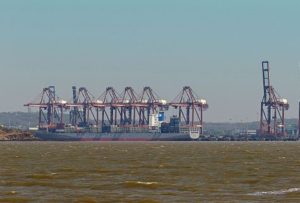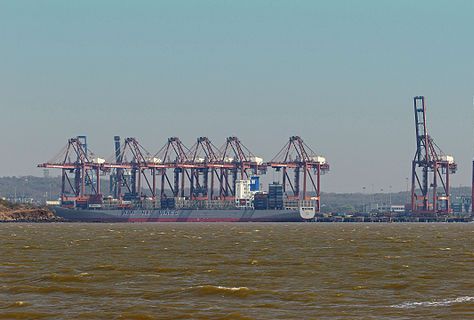 Bankrupt Korean line Hanjin’s exit from the overcrowded Asia to the Middle East and South Asia (ME/SA) trade will reduce competition and lift utilization and rates, but it won’t improve the poor outlook for the two lanes, according to Drewry Maritime Research.
Bankrupt Korean line Hanjin’s exit from the overcrowded Asia to the Middle East and South Asia (ME/SA) trade will reduce competition and lift utilization and rates, but it won’t improve the poor outlook for the two lanes, according to Drewry Maritime Research.
The removal of ships operated by Hanjin Shipping will bring some form of relief to the remaining carriers on the two routes but is unlikely to reverse the serious underperformance of the lanes compared to recent years, says a new analysis by the logistics consultancy.
Drewry said volume growth from Asia to the two regions has been significantly diminished, with Middle East imports having shrunk by 1.8% after eight months into 2016.
“It is clear now that there will be no overall annual growth in this trade this year, after seeing rates of 4.4% and 2.7% in 2014 and 2015 respectively,” said the report.
The sharp drop in oil revenues and consumer spending lies behind the malaise in the trade. In Dubai—the dominant port in the Middle East—the general sentiment is still bearish as the property market remains weak, construction work has slowed, and the strong U.S. dollar has badly affected the tourism and retail sectors.
More positively, the reentry of Iran to the world markets after sanctions were lifted at the start of the year will boost container flows to the region. A host of countries are now lining up to sign trade deals with Iran, including China which wants to quintuple its commercial dealings with the country over the next five years.
Bandar Abbas, a key port city on the southern coast of Iran, had been a transit point for cargoes that were then trucked up to the Central Asian states. During the sanctions, some of this traffic was shipped via other routes (via Turkey or Georgia) but this should now find its way back on to Asia-Middle East loaders.
The Asia to South Asia trade is more encouraging, as container volumes after eight months were up by 5.3% on the same period last year, said Drewry. However, this still represents a significant deceleration as the annual rates for 2014 and 2015 were 14.4% and 8.6%, respectively.
Additional transshipment activity in Colombo arising from Bangladesh’s booming clothing industry is helping sustain South Asia’s relatively strong trade. India’s trade liberalization, which now allows for 100% foreign ownership of firms in many industries, is also seen to generate more trade into and out of the country. In particular, India is becoming a major player in the automotive sector and is set to become the world’s third largest car manufacturer by 2020.
The rolling 12-month average of westbound volumes from Asia to the Middle East and South Asia indicates that the latter appears have pulled out of its downwards slide, while the former continues to lose ground.
Hanjin was a bigger presence in the Asia-Middle East trade than it was in the Asia-South Asia market, controlling about 10% of capacity in the former and 4% in the latter. Hence, its demise caused capacity to tumble more sharply in the Middle East route as September’s slots fell by 13% against August. Some 28 missed voyages in September also reduced the total slot count, which compared to the same month in 2015 was down by around 8%.
Hanjin’s exit from the Asia-South trade reduced available capacity by 6% month-on-month in September, which temporarily slowed carriers’ general inclination to inflate the slot count. Even after Hanjin’s ships were pulled and accounting for 20 missed voyages in September, capacity on the trade remained 25% above where it stood a year ago. South Asia has become a main outlet for cascaded ships of up to 9,000 TEUs, with the average size of ships on this route now just under 5,000 TEUs, up by about 15% on last year.
Drewry said the impact on utilization of the withdrawal of Hanjin’s ships from these two routes cannot as yet be quantified. However, these slings “have been less than favorable for carriers for some time,” it added, noting that westbound ship utilization to both loops has struggled to get much above 60% all year and has worsened in the latest months, pulling down spot rates in the process. Inevitably that has meant that spot rates have remained very poor.
“The capacity adjustment caused by Hanjin’s exit should see spot rates rise, but probably not by enough to make these trades profitable for carriers,” said Drewry.
Photo: A.Savin





